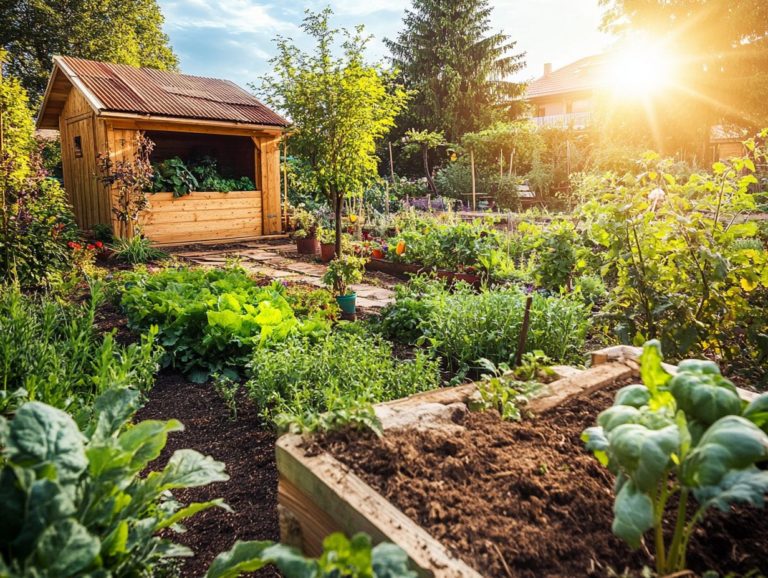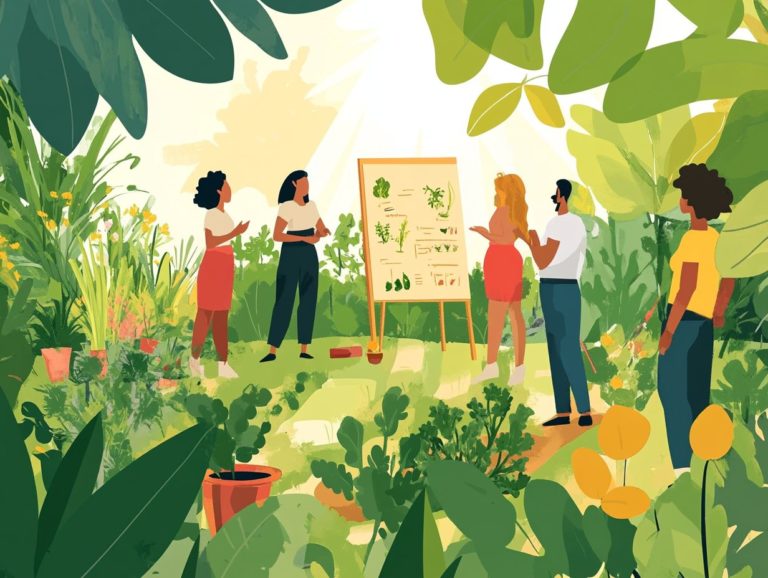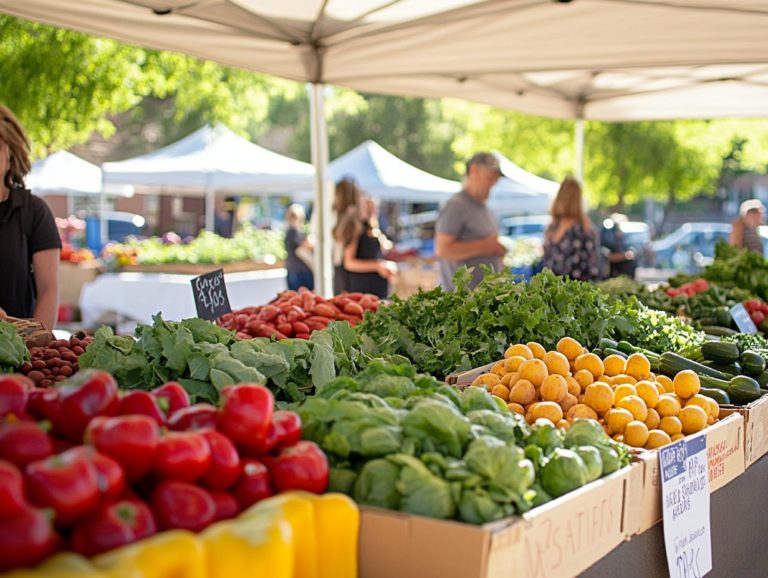66. 5 Best Practices for Community Gardening
Community gardening goes beyond the simple act of planting seeds; it s about building relationships, enhancing neighborhoods, and fostering sustainability.
You ll discover five best practices that can help you create a thriving community garden. This includes selecting the ideal location, establishing clear guidelines, engaging local members, and promoting sustainable practices. Each aspect is essential for success.
You ll also explore the benefits of community gardening and its role in combating food insecurity. Dive in as we uncover the essentials for a successful gardening project that unites everyone involved!
Contents
- Key Takeaways:
- 1. Choose the Right Location for Your Community Garden
- 2. Establish Guidelines and Rules
- 3. Get the Community Involved
- 4. Maintain the Garden Regularly
- 5. Encourage Sustainable Practices
- What Are the Benefits of Community Gardening?
- What Are Some Common Challenges in Community Gardening?
- How Can You Fund and Sustain a Community Garden?
- What Are Some Creative Ideas for Community Gardening Projects?
- How Can Community Gardening Help with Food Insecurity?
- Frequently Asked Questions
Key Takeaways:
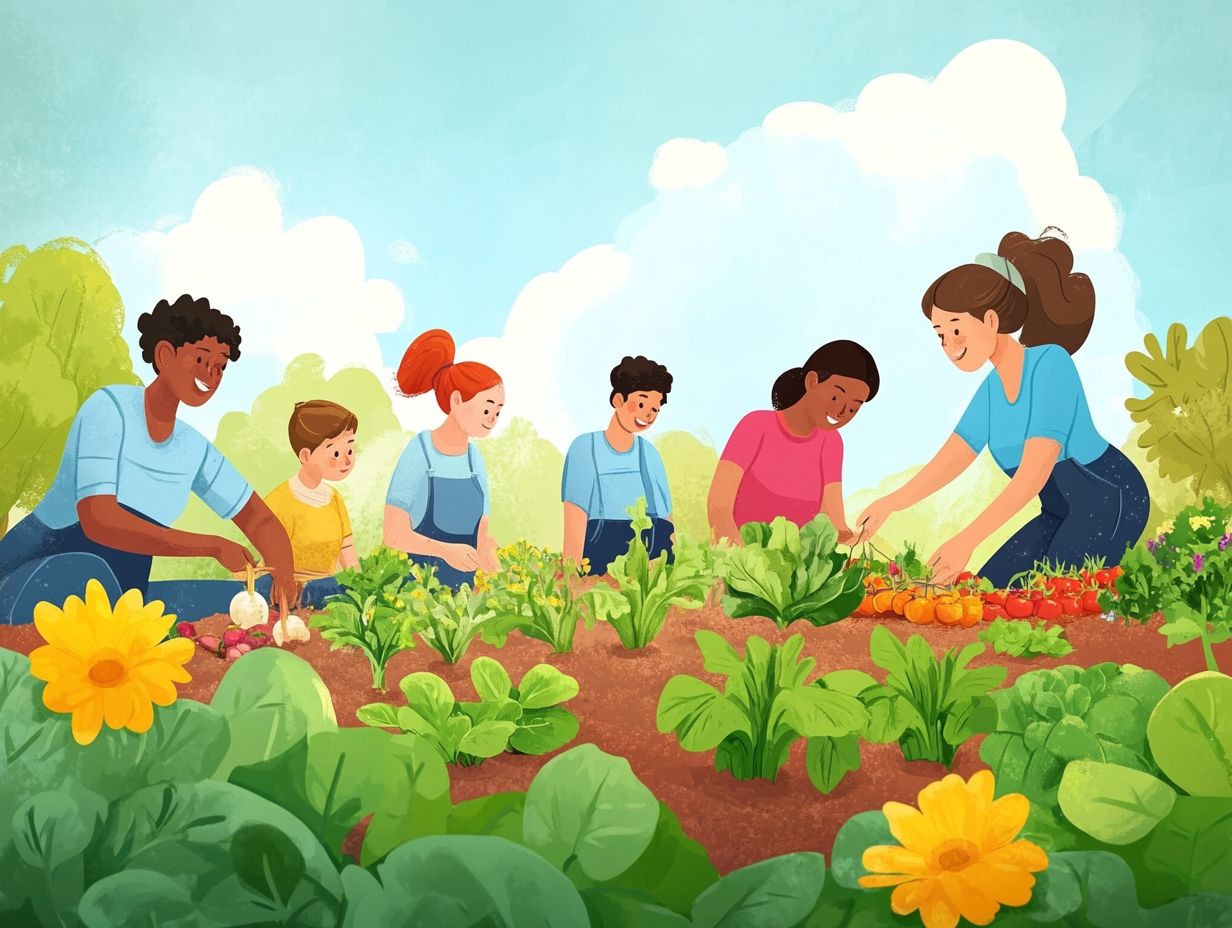
- Choose a sunny location with easy access to water.
- Establish clear rules to ensure sustainability.
- Engage community members through fun events and workshops!
1. Choose the Right Location for Your Community Garden
The right location for your community garden is vital. This is especially true for areas like the US-Mexico border. Community gardening can greatly affect health issues, promote healthier lifestyles, and enhance community well-being in cities like El Paso, Las Cruces, and Anthony.
To assess land access effectively, consider the availability of vacant lots ripe for transformation into vibrant green spaces. By utilizing these underused areas, you not only beautify neighborhoods but also provide fresh produce to communities grappling with food insecurity.
The proximity of these gardens to minority communities is critical, as they can become vital resources for healthy food options. Local organizations such as the Border Agricultural Initiative and the El Paso Collaborative for Community and Economic Development offer invaluable support in your site selection process.
Community gardens, in turn, play a pivotal role in alleviating food deserts areas with little access to fresh food and fostering social connections among residents.
2. Establish Guidelines and Rules
Establishing clear guidelines and rules for your community garden is key to fostering support, ensuring equitable access, and promoting gardening practices that resonate with the cultural norms of all participants.
Engaging community members in the creation of these guidelines is essential; it allows individuals to express their unique perspectives and cultivates a sense of ownership over the garden. Inclusivity is pivotal, allowing diverse voices to shape a shared vision that reflects the community s values. By adhering to health equity principles, you address varying needs and deepen engagement, making community members feel respected and celebrated.
This collaborative effort enhances the overall gardening experience, ultimately cultivating a vibrant and sustainable environment for everyone to enjoy.
3. Get the Community Involved
Involving the community in gardening initiatives not only cultivates social connections but also elevates civic participation, weaving a stronger fabric of community building.
To advance this vision, consider hosting gardening education sessions as a dynamic way to engage diverse community members and teach valuable skills. Organizing seasonal events also creates opportunities for meaningful interaction and collaboration. By partnering with local organizations, your initiative can extend its reach, ensuring that everyone regardless of background feels welcome and included.
This thoughtful approach nurtures a sense of belonging and encourages participation from various demographics, enabling everyone to share their unique perspectives. Ultimately, these strategies foster a vibrant community spirit, allowing everyone to thrive together.
4. Maintain the Garden Regularly
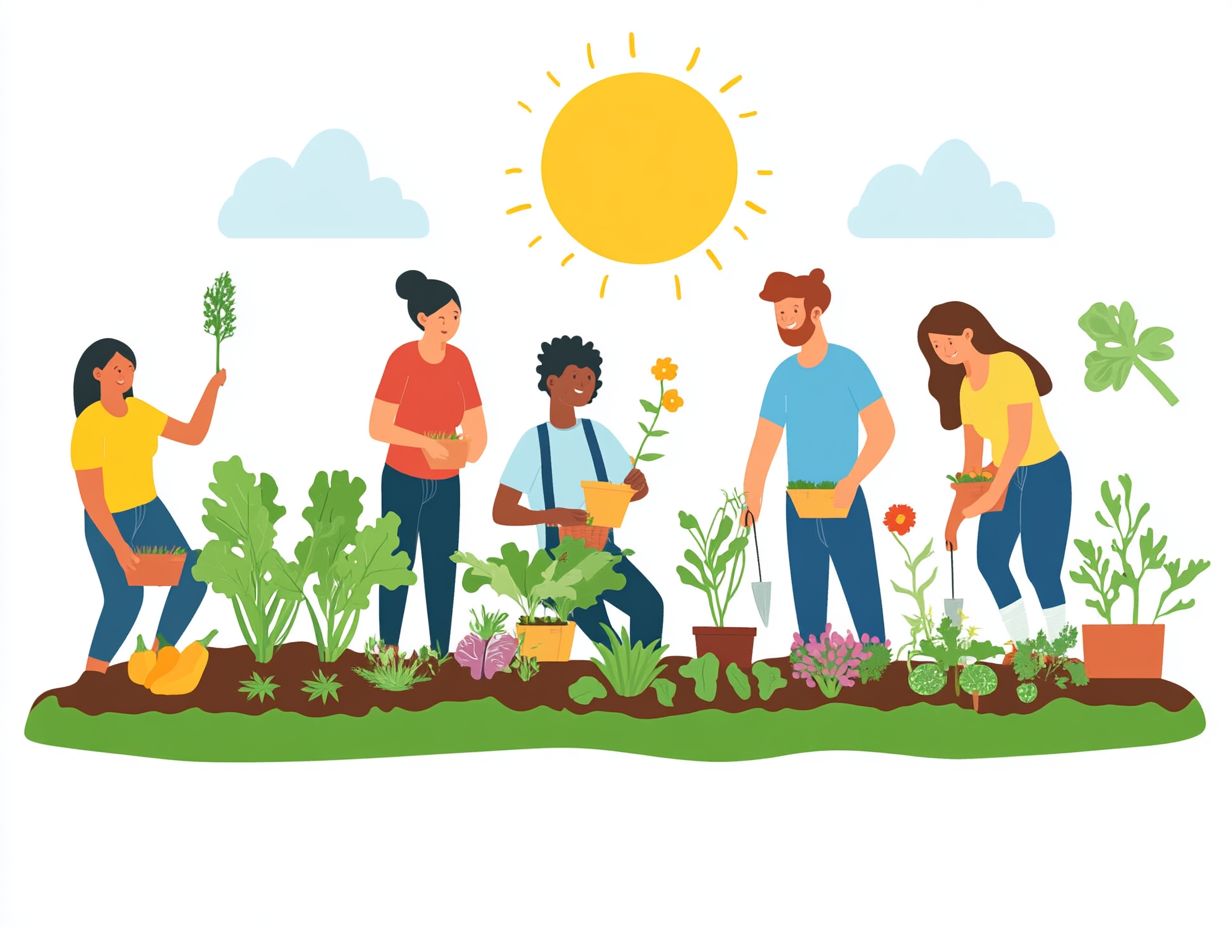
Regular maintenance keeps community gardens thriving. It promotes physical activity and supports the environment while providing fresh produce for everyone.
Designating specific days for upkeep encourages community members to gather. This fosters a sense of belonging and shared responsibility.
Engaging local residents in these activities strengthens social ties. It also raises awareness about sustainable gardening practices.
When you join in, you enjoy fresh produce while improving your physical health through outdoor activity. This collective effort creates a positive ripple effect.
It enhances overall community well-being and nurtures an appreciation for nature. Ultimately, this leads to healthier lifestyles and stronger neighborhood bonds.
5. Encourage Sustainable Practices
Encouraging sustainable practices in community gardening is a powerful way to enhance food security. It also promotes smart ways to save water and contributes to urban biodiversity.
Incorporating techniques like composting and organic gardening helps cultivate healthier ecosystems. Composting reduces waste and enriches the soil.
Organic gardening eliminates harmful chemicals, benefiting consumers and the environment. Smart irrigation methods ensure that valuable water resources are used effectively.
These practices align with broader environmental goals. They mitigate climate change impacts, encourage wildlife habitats, and boost community resilience.
As a result, you’ll see enhanced well-being and a strong sense of stewardship in your community.
What Are the Benefits of Community Gardening?
Community gardening brings many benefits, including improved health outcomes and reduced health disparities. It s also about cultivating a vibrant community with access to fresh fruits and vegetables.
These gardens serve as platforms for increased physical activity. Participants come together to nurture their plots and care for shared spaces.
As you engage in this effort, you may notice improvements in your nutrition. Direct access to a variety of fresh produce inspires healthier eating habits.
Community gardening also strengthens support networks. It forges meaningful connections among neighbors and enables collaboration.
These initiatives align well with programs like Healthy Eating Active Living (HEAL), which promote holistic wellness. They also help build local food systems.
Ultimately, these projects enhance individual health and foster a profound sense of belonging in your community.
How Can You Attract and Engage Community Members?
Attracting and engaging community members in a garden requires targeted outreach and effective engagement strategies. Educational initiatives can help cultivate social connections.
Forming partnerships with local organizations, like schools and health centers, taps into existing networks. This helps you reach a broader audience.
Establishing social media campaigns showcases the benefits of gardening, such as boosting mental health and providing fresh produce. This will generate interest and encourage participation.
Hosting community events, like hands-on workshops and seasonal harvest festivals, is essential for attracting a diverse crowd. These initiatives create a vibrant atmosphere while equipping individuals with valuable skills.
What Are Some Common Challenges in Community Gardening?
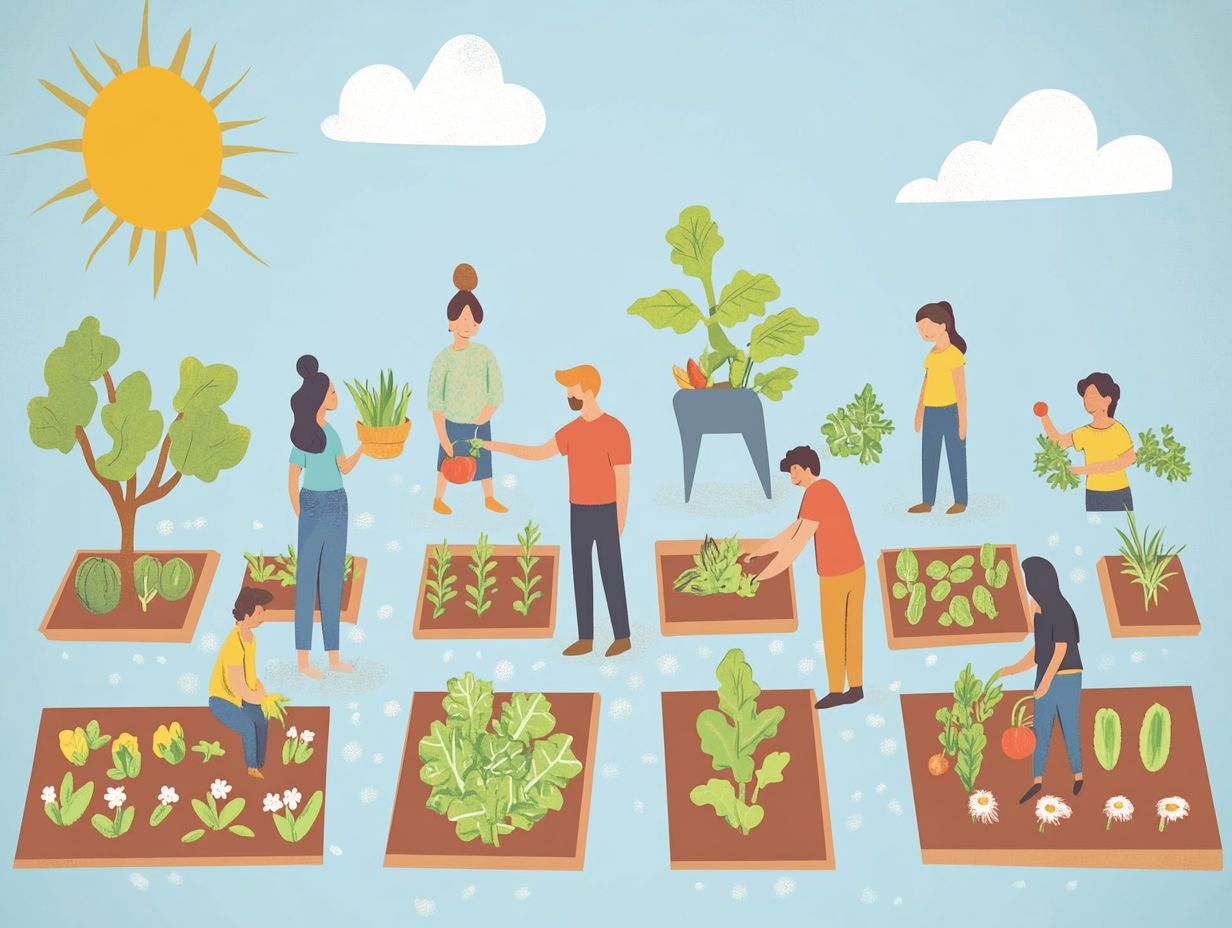
Community gardening faces many challenges. These include funding issues, maintaining community support, and health disparities among participants. These problems can significantly impact gardening practices and the overall success of your initiatives.
These hurdles may discourage even the most passionate community members from realizing their gardening aspirations. Securing funding can feel like a monumental task, demanding detailed grant applications and a good understanding of financial resources.
You might also notice fluctuations in community engagement, leading to inconsistent participation that disrupts the continuity of your projects. To navigate these challenges, consider forming partnerships with local businesses and seeking grants from organizations committed to community health. These strategies can be transformative.
By fostering a culture of ongoing support through workshops, volunteer days, and social media engagement, you can invigorate community interest and commitment. This approach ultimately ensures a sustainable future for your community gardening initiatives.
How Can You Fund and Sustain a Community Garden?
Funding and sustaining a community garden requires navigating various funding challenges. Forge partnerships with community-based organizations and leverage local governmental resources to ensure long-term success, especially in areas like the US-Mexico border where land access can be a significant issue.
To achieve this, consider applying for grants specifically aimed at supporting community initiatives. Seek donations from local businesses and individuals and organize community fundraising events. These events not only raise essential funds but also cultivate a sense of ownership and pride among participants.
Engaging the community is vital. It helps generate necessary funds and fosters sustained interest in the garden’s activities. When residents feel connected and invested, they are more inclined to contribute their time, resources, and enthusiasm, creating a vibrant atmosphere essential for the garden’s ongoing health and productivity.
What Are Some Creative Ideas for Community Gardening Projects?
Creative ideas for community gardening projects can truly invigorate your neighborhood. These initiatives foster engagement while honoring cultural norms, enhancing urban greening, and promoting gardening education across diverse populations.
By exploring initiatives like vertical gardens and themed gardens, you can tap into the unique interests and skills of your residents, cultivating a sense of ownership and pride. Educational workshops can draw in a variety of demographics, from families eager to learn sustainable practices to retirees seeking social interaction.
These projects do more than beautify neighborhoods; they serve as valuable platforms for knowledge sharing, connecting individuals from different backgrounds. In doing so, they encourage collaboration and build meaningful social support networks while tackling local environmental challenges.
How Can Community Gardening Help with Food Insecurity?
Community gardening plays a crucial role in tackling food insecurity by providing access to fresh fruits and vegetables, encouraging healthy lifestyles, and enhancing fair access to healthy food in your community.
Community gardens are more than just a source of fresh food; they are lively spaces for education and fun! Here, you can learn about sustainable practices and healthy cooking. Take, for example, a remarkable initiative in Detroit that has transformed vacant lots into flourishing community gardens. Residents now have the opportunity to grow their own produce, which helps reduce dependence on the unhealthy fast food options that are all too common in the area.
Similarly, a project in New York City has engaged young participants in garden-based programs, emphasizing the importance of nutrition and enabling them to advocate for healthier eating habits within their families. These examples showcase how community gardens can foster resilience, improve nutrition-related outcomes, and enable individuals to take charge of their food sources.
Join your local community garden today and make a difference!
Frequently Asked Questions
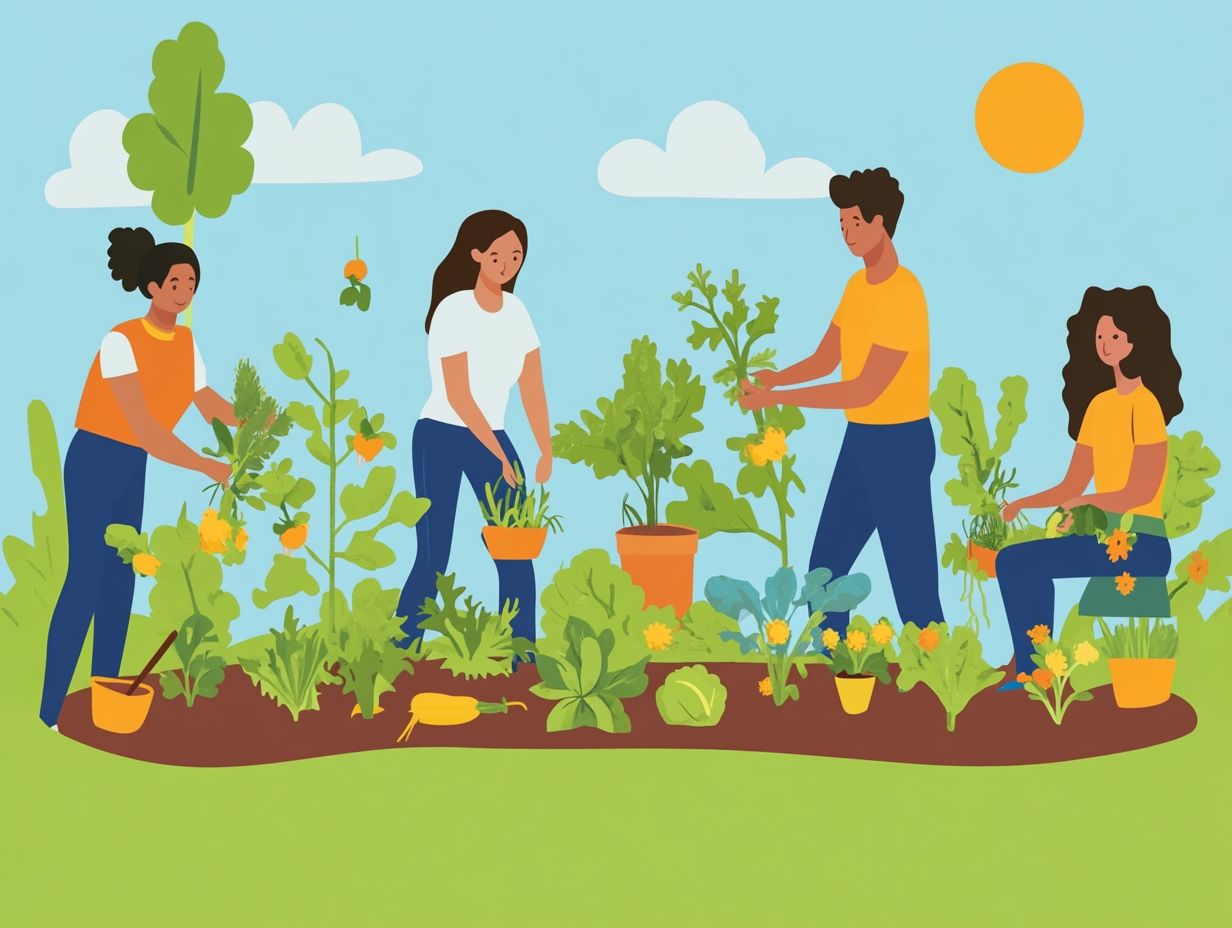
Discover the Joy of Community Gardening!
Community gardening is the practice of growing and maintaining plants in a shared space with members of a community. It can be in a public or private area and is often used to grow fruits, vegetables, and flowers.
Why is Community Gardening Beneficial?
Community gardening improves access to fresh produce and helps the environment. It also creates a sense of community and connection among participants.
In addition, it offers a chance for individuals to learn and share knowledge about gardening and sustainable practices.
What are the Best Practices for Community Gardening?
The five best practices for community gardening include:
- Establishing clear rules and guidelines for garden use.
- Managing and maintaining the garden space effectively.
- Encouraging community involvement and participation.
- Promoting diversity and inclusion within the garden.
- Implementing sustainable and environmentally friendly practices.
How Can I Get Involved in Community Gardening?
Join a community garden today and start making a difference! You can participate by joining an existing garden or starting your own with a group of interested individuals. Reach out to local organizations or community centers to find gardening initiatives in your area.
What are Some Benefits of Following Best Practices in Community Gardening?
Following best practices leads to a more organized and well-maintained garden. It fosters a stronger sense of community among participants and creates a sustainable space that thrives. Additionally, using technology for community gardening helps avoid conflicts and keeps the garden flourishing!
Can Anyone Participate in Community Gardening?
Yes! Community gardening welcomes people of all ages, backgrounds, and gardening experience. It s a wonderful way to bring people together and promote inclusivity within a community.


